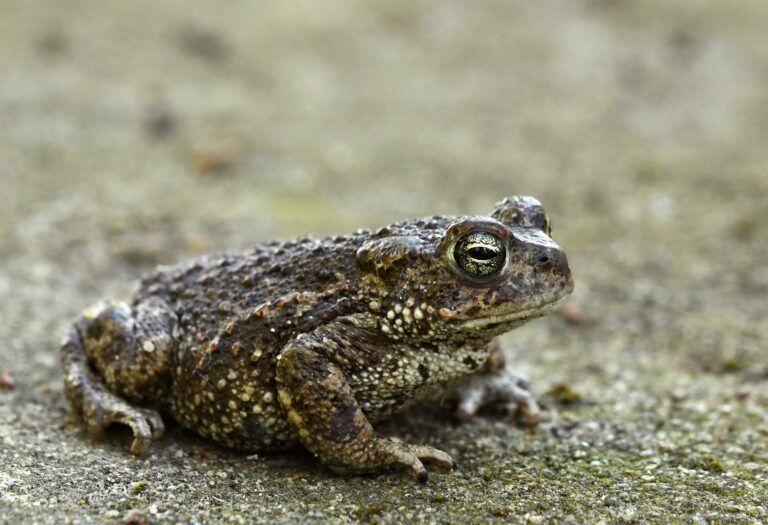Epidalea calamita

The Natterjack Toad (Epidalea calamita) can reach a body length of up to 9 cm. The upper side of its body is characterized by a gray to brown coloration with greenish spots. A narrow yellow stripe runs along the middle of its back. Male individuals also possess nuptial pads on the inner side of the first three fingers. The Natterjack Toad inhabits lightly vegetated areas and prefers small, shallow standing waters without vegetation as breeding sites. Puddles are also utilized. The breeding season takes place from April to June, during which the female deposits up to 4000 eggs in 1-2 meter-long strings into the water. The main threats to this species include premature drying of the small breeding sites, the construction of forest paths, and predation by mallards, dragonfly larvae, and sticklebacks (Glandt 2018).
Diet: The Natterjack Toad feeds on beetles and other insects, as well as worms and mites (Glandt 2018).
Threat Status: In Germany, the Natterjack Toad is classified as “endangered.” Therefore, it is considered “strictly protected” according to the Federal Nature Conservation Act and also protected throughout Europe under Annex IV of the Habitats Directive.
-
Glandt D (2018)Praxisleitfaden Amphibien- und Reptilienschutz. Schnell – präzise – hilfreich. Berlin, Heidelberg: Springer Berlin Heidelberg.